What Hi-Fi? Verdict
Mini LED combines with local dimming and Sony’s latest picture processor to outstanding effect
Pros
- +
Stunning Mini LED-powered contrast
- +
Beautifully rich but controlled colours
- +
Detailed, well-rounded and engaging sound
Cons
- -
A bit lacking in bass
- -
No Dolby Vision gaming support
- -
Only two game-friendly HDMIs
Why you can trust What Hi-Fi?
Sony’s debut Mini LED TV, last year’s X95K, was mostly excellent, combining bags of brightness and contrast – just as we’d hope to see from Mini LED technology. The only problem was that despite driving its Mini LEDs with a decent number of local dimming zones, bright objects could still sometimes be surrounded by pretty noticeable halos of extra light.
Pre-launch demonstrations of Sony’s sophomore Mini LED TV, though, the X95L, suggested that the brand had found a way to tackle that previous haloing issue – something we’re able to confirm, now that we have a final production line model of the 65-inch X95L sat imposingly on our test bench. But does that make it one of the best Sony TVs?
Price

While the XR-65X95L’s £2199 asking price is clearly a lot of money, we’d argue it actually looks like potentially good value for such a well-specified TV. We’re talking, after all, about a 65-inch 4K set that delivers its pictures using Mini LED technology backed up by local dimming and a couple of key Sony exclusives: the brand’s latest Cognitive XR processor, and its renowned Triluminos colour system.
Rival Mini LED TVs from Samsung and rival premium QD-OLED or MLA OLED TVs from Samsung and LG, by comparison, will set you back hundreds of pounds more at the time of writing.
The value proposition looks even more appealing in the US, where the $2199 price of the 65X93L (the name given to Sony’s US Mini LED range) stacks up nicely against the UK once you’ve taken exchange rates into account.
You can also buy 75-inch and 85-inch sizes of the X95L range, priced at £3499 / $2999 and £4499 / $4500 respectively. Note that the X95L range is not currently listed as available in Australia, which tops out at the non-Mini LED X90L series.
Design
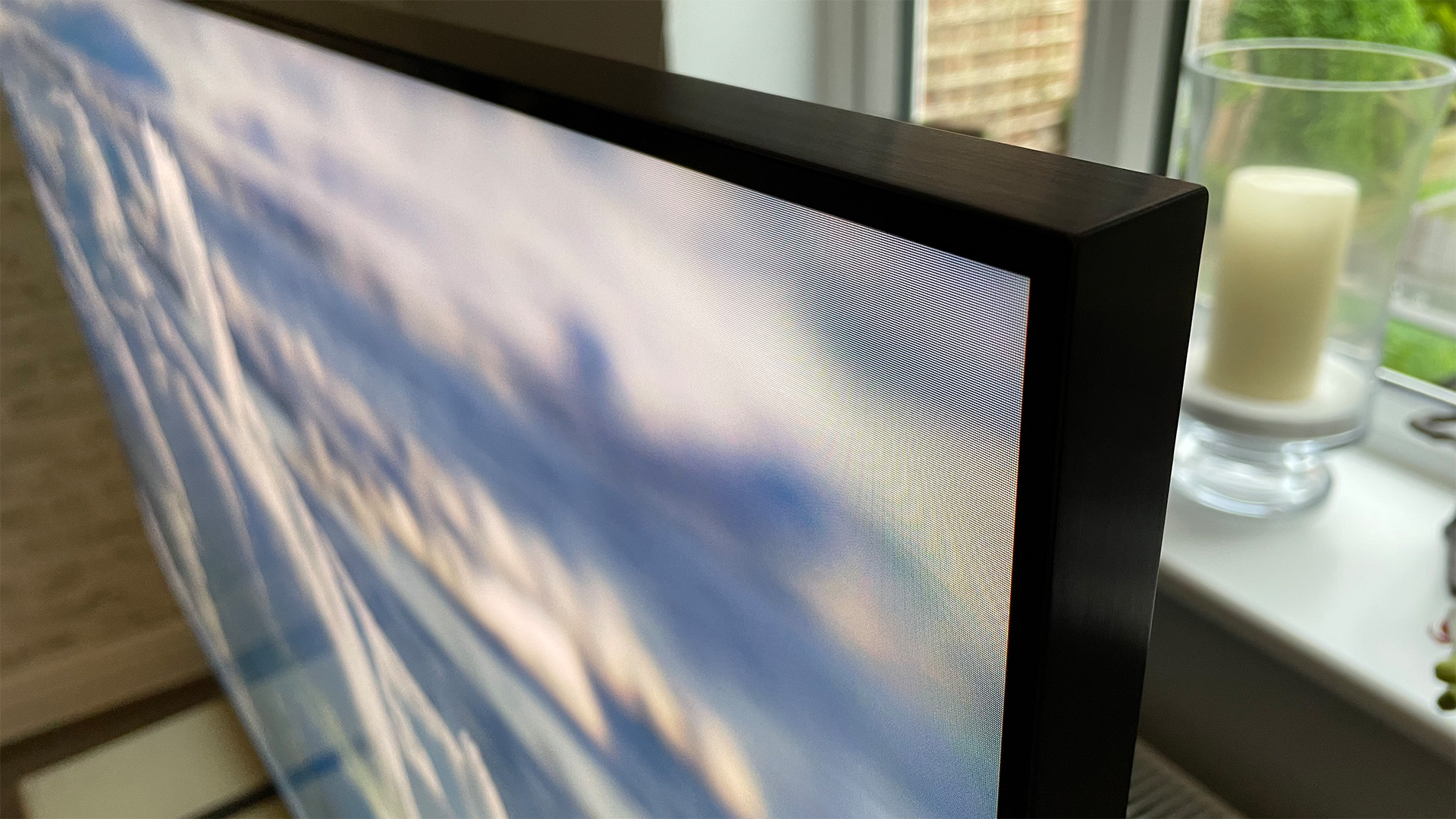
While the X95L is far from the showiest-looking TV around, there’s a minimalist elegance and confidence about it that makes it an imposing but never overbearing presence in your living room.
The latest hi-fi, home cinema and tech news, reviews, buying advice and deals, direct to your inbox.
Its back-breaking weight alerts you to some uncompromising build quality, too – as well as raising hopes of a similarly uncompromising performance from the direct-lit Mini LED panel.
The set’s rear sticks out further than most TVs we see these days – something to bear in mind if you’re thinking of hanging it on a wall. Again, though, we personally don’t mind this if the bulk is the result of Sony refusing to sacrifice any panel performance on the altar of slimness.
If you’re not wall mounting the X95L, it sits on a pair of fairly straightforward-looking black feet that can be positioned either close together or right out under the TV’s wings. You can also choose whether you want the TV to sit low down on the feet or, with the feet placed wide, sit up a couple of inches to make room for a soundbar.
Features

The X95L illuminates its pictures using Mini LEDs. Since these are much smaller than regular LEDs, many more of them can be fitted inside the TV’s 65-inch screen area. This means pictures have the potential to be brighter, and for that brightness to be better controlled.
As usual with Mini LED TVs, the X95L adds to the potential extra light precision with a local dimming system, where different clusters of the Mini LEDs can output different amounts of brightness within any given image frame, opening the door to much more contrast than you could get if all the Mini LEDs were always controlled en masse.
Counting the exact number of dimming zones proves difficult due to Sony’s impressive light control mechanisms, but it’s in the region of 480. That’s a fairly impressive number, though we’re bound to point out that Samsung is using substantially more on its premium (and, to be fair, much more expensive) 2023 Mini LED ‘Neo QLED’ models. As we’ve seen before with local dimming, though, it’s not always the number of dimming zones that counts, but what you do with them.
The Mini LEDs and dimming zones are under the command of Sony’s latest Cognitive Processor XR engine. This also continues to pursue its long-running obsessions with both making pictures look as close as possible to the way they were created in a mastering suite, and making them look more like the way your eyes perceive the real world – by, for instance, emphasising the main subjects of the picture, and using object detection to create a more three-dimensional image.
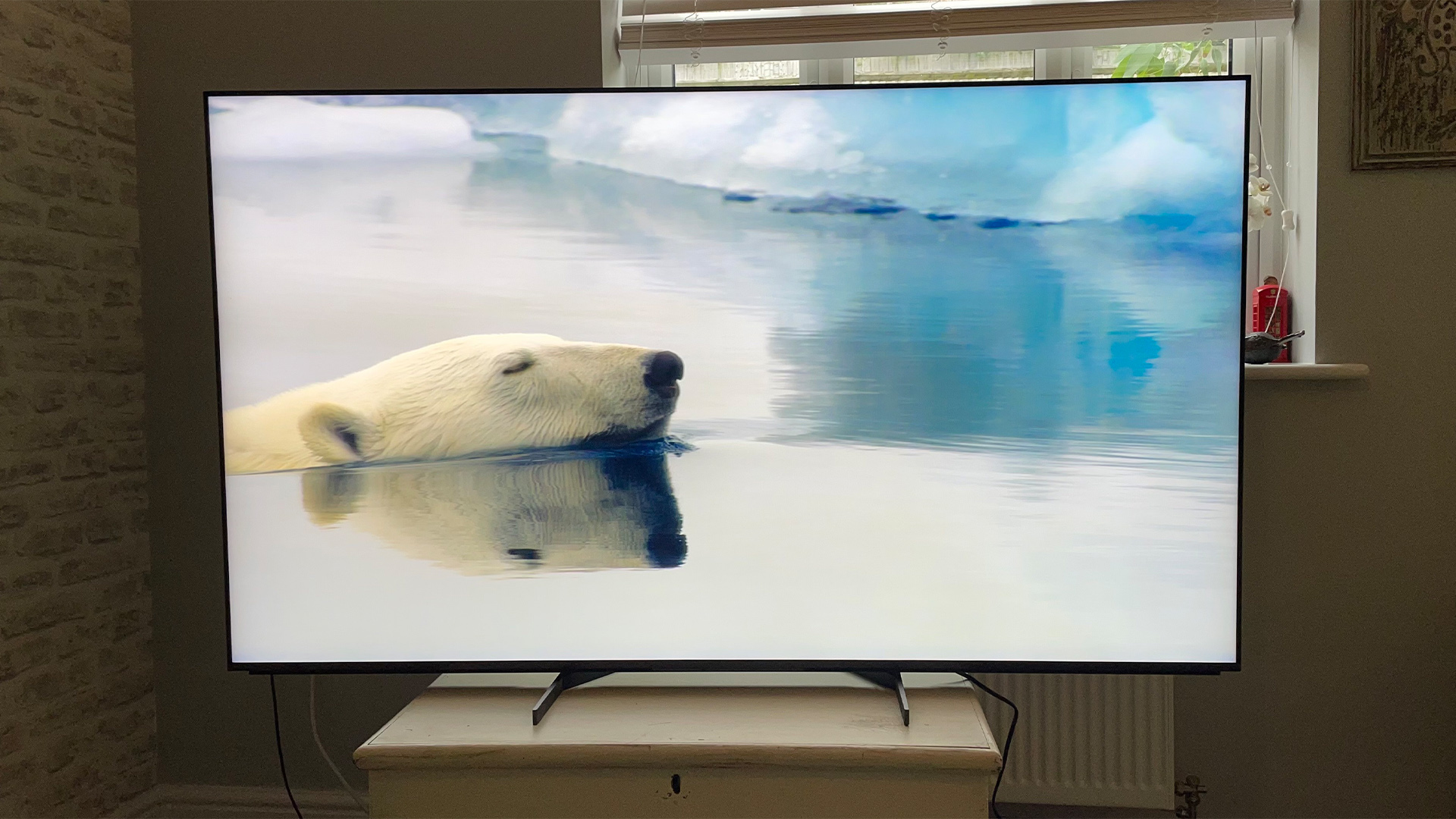
Screen size 65 inches (also available in 75 and 85 inches)
Type LCD w/ Mini LED backlight
Resolution 4K
HDR formats HLG, HDR10, Dolby Vision
Operating system Google TV
HDMI inputs x4
HDMI 2.1? Yes, x2
Gaming features 4K/120Hz, VRR, ALLM
ARC/eARC eARC
Optical output? Yes
Dimensions (hwd, without stand) 84 x 144 x 6.2cm
The X95L works much harder than its predecessor to cater for gamers as well as movie and TV enthusiasts. In particular, there’s a new onscreen menu that only appears when the TV knows you’re playing a game, and contains both useful information on the gaming signal you’re receiving and a few interesting gaming-specific options. These include the ability to call up a targeting crosshair, the ability to trade response time against motion blur, and a black equaliser that lets you adjust the brightness of dark parts of game images without affecting bright areas.
The lowest input lag figure in the X95L’s Game mode hits a very respectable (though not class-leading) 18.8ms with 60Hz games, and this more or less halves with 120Hz titles. For yes, the X95L supports 4K/120Hz gaming, as well as VRR – albeit only across two of its HDMIs. In truth, two fully featured HDMIs will probably be enough for most households, but it still feels like a frustrating limitation to be finding on a 2023 premium TV – especially when one of the X95L’s two high-bandwidth HDMIs is also your only option if you want to pass Dolby Atmos sound out from the TV losslessly to a soundbar or AVR using the eARC feature.
There is a bit of extra good news for PlayStation 5 gamers, though, in the shape of Auto HDR Tone Mapping, which the console uses to identify the exact model of TV it’s connected to so that it can automatically optimise its high dynamic range output, and an Auto Genre Picture Mode where the TV automatically switches between Game and video presets depending on what sort of content your PS5 is playing (not unlike the ALLM feature that’s part of the regular HDMI 2.1 specification).
If you’re a fan of Dolby Vision gaming, though, there’s more bad news in that the X95L doesn’t carry a Dolby Vision game mode. So if you want to play in Dolby Vision you’ll have to put up with pretty severe levels of input lag. The TV also forces you to choose between VRR support and Dolby Vision in its HDMI signal format menu; you can’t have both together.
The X95L’s smart features are provided – as with all Sony TVs – by Google TV. This has the benefit of delivering huge quantities of online content and a superior interface to its Android TV predecessor, but the disadvantage of still feeling a little overwhelming and dictatorial in its approach compared with some rival smart TV systems. Sony has overcome Google TV’s issue with not supporting all of the UK’s main terrestrial broadcaster catch-up services, though, by also equipping the X95L with the YouView ‘umbrella’ app.
The Google operating system means there’s support for both Chromecasting and Google Assistant voice control out of the box – though there’s also integrated AirPlay compatibility for Apple fans.
There’s a Sony-exclusive smart feature, too, in the shape of the Bravia Core streaming service. This supports a uniquely high streaming bandwidth of up to 80Mbps in a bid to deliver superior 4K picture quality – and if you buy a 65X95L you’ll be entitled to buy 10 premium (AKA, recent) films and two years of unlimited streaming of all the service’s older catalogue content.
Bravia Core supports the screen-filling, noise-minimising IMAX Enhanced mastering system on some of its titles, too, so it’s good to find the X95L also carries an IMAX Enhanced picture setting.
The X95L supports the HDR10, HLG and Dolby Vision high dynamic range formats, but leaves HDR10+ off the table.
As Sony’s flagship 65-inch LCD TV for 2023, it’s no surprise to find the 65X95L carrying a relatively premium audio system. This so-called Acoustic Multi-Audio+ approach uses a multi-speaker system complete with ‘Frame Tweeters’ placed relatively high up in the TV’s bodywork – the idea being to create a larger soundstage within which effects are placed more accurately so that they seem to be coming from the correct part of the image.
The Cognitive XR processor can also convert any incoming sound up to virtual surround sound – as well as supporting playback of Dolby Atmos soundtracks. One final sign of Sony’s confidence in the power and quality of the X95L’s sound system is its Acoustic Centre Speaker feature, which lets the TV take on centre-channel speaker duties in a multi-channel speaker set-up.
Picture
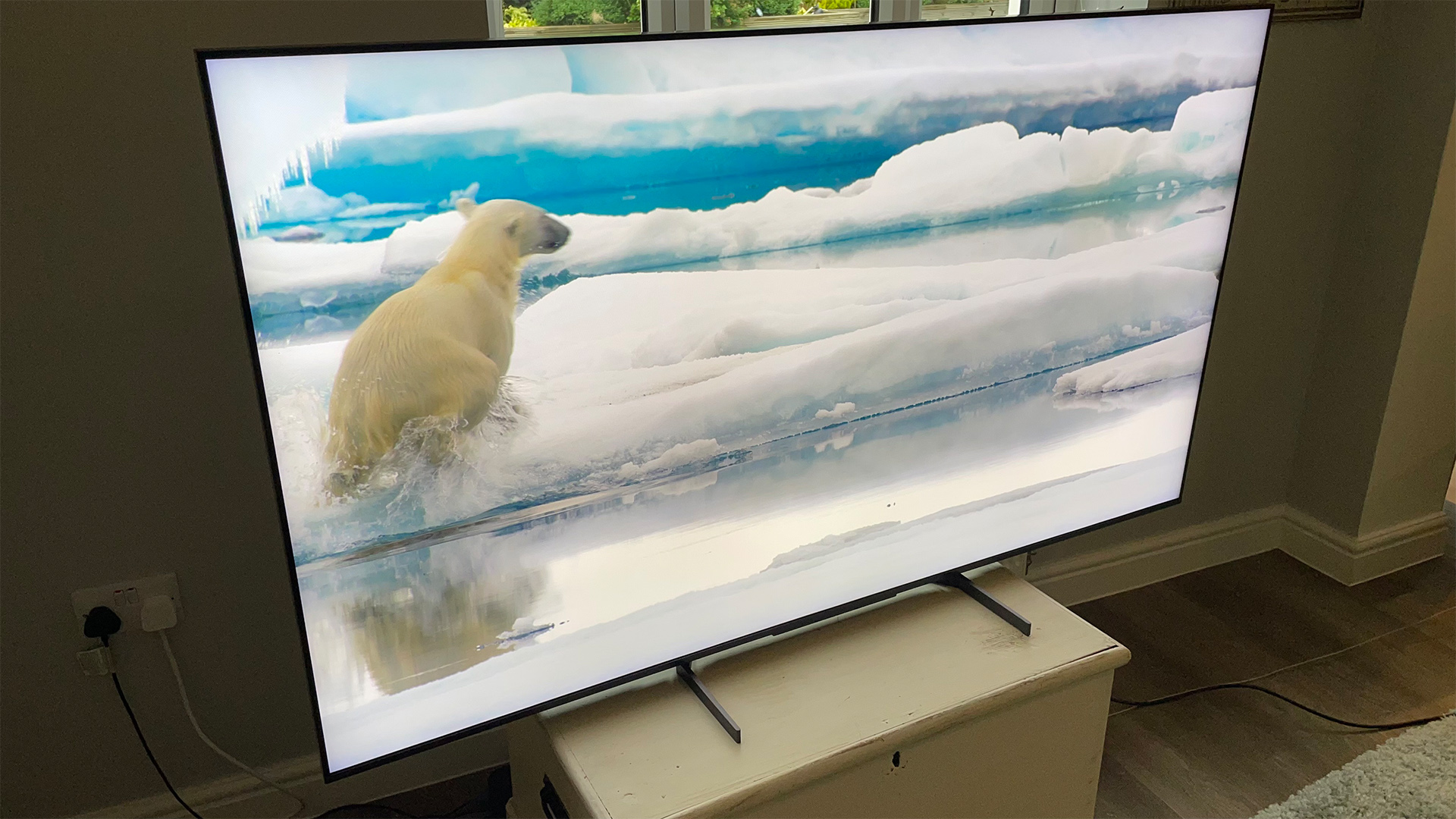
It doesn’t take long watching the X95L to see that it massively reduces the backlight haloing problem seen on its Mini LED predecessor. And in doing so it takes Sony’s Mini LED picture quality to a gorgeous new level that gives more expensive Mini LED – and even OLED – TVs plenty to worry about.
We deliberately bombard the X95L from the off with the sort of imagery we know is most likely to give LED TVs a local dimming headache, but the X95L passes almost every test with flying colours. So, for instance, where a very bright HDR object appears against a very dark backdrop, it’s much less likely to appear with light ‘bloom’ around it than it would with 2022’s X95K. In fact, more often than not it’s hard to detect any blooming at all. And even on the rare occasions where blooming does appear, it is both faint and only spreads for a relatively limited distance beyond the bright object’s edges.
It’s also great to see no blooming creeping into the black bars that appear above and below wide aspect ratio films. Light leakage into such pitch-black image ‘constants’ can be especially distracting, but Sony seems to have deliberately targeted black bar areas with its local dimming controls to ensure they always remain immaculately and consistently black.
The X95L does seem to be dimming bright objects down a touch in its best picture presets where they appear against very dark surroundings – something Sony has appeared to resist with its previous locally dimmed LCD TVs. However, the amount of dimming going on is subtler and faster-responding than similar bloom-reducing techniques deployed by other LED TV brands, and so doesn’t feel like much of a compromise at all versus the gorgeous black level uniformity it contributes to.
In fact, even the most mixed brightness images never feel remotely lacking in contrast or intensity, or inconsistent in any significant way. On the contrary, its ‘peak’ brightness with small bright HDR highlights falls only marginally short of the peaks delivered by the latest, significantly more expensive MLA OLED and QD-OLED flagship TVs, while full-screen bright images look actually much brighter than they do on even those dazzling new OLED technologies.
Samsung’s latest flagship Mini LED TVs are capable of getting much brighter still than the X95L, it should be said. But as well as costing much more, those TVs also depend on more drastic and therefore potentially noticeable light manipulation to keep backlight blooming in check.
Delivering very bright images can go one of two ways with TVs when it comes to colour. Either it can leave colours looking washed out if a screen doesn’t have the colour gamut technology to ‘keep up’ with all that light, or the brightness can feed into a greater colour volume, delivering more of the full colour palette that usually accompanies today’s HDR sources. Happily, the Sony X95L falls very much in the latter camp. With knobs on.
In fact, it produces some of the richest, most vibrant colours we’ve seen on any TV. This can go way too far with the set’s Vivid preset, which pushes saturations to a point where they become cartoonish, and exaggerate noise. But they’re still a lush cut above the norm even in the more subdued Standard (default) preset, and even in the modes dedicated to accurate representations of industry mastering standards, Cinema and Custom, colours still retain saturations that remind us of the beautiful fullness we’ve seen running on OLED mastering monitors costing tens of thousands of pounds.
The OLED reference isn’t made lightly there, either; the X95L’s much improved local light control and resulting remarkable-for-LED black levels really do create an OLED feel at times – except for having more (especially full-screen) brightness than typical OLED TVs. The X95L light control is even good enough to retain levels of shadow detailing in dark areas that get close to the levels you might normally only expect with the best fully self-emissive screen technologies.
Sony’s Triluminos system has a good track record of rendering even the finest of colour tone shifts, and outside of the overcooked Vivid preset again, this holds up brilliantly on the X95L. In fact, the set’s ability to render the subtlest blends without striping or smudging plays a big part in how impeccably sharp, detailed and three-dimensional its 4K images look.
You don’t have to worry about motion interrupting the clarity of the X95L’s 24p movie pictures, either. Even with no motion processing active, judder with such sources looks natural rather than jarringly exaggerated – though if you do want to trim the edges off the judder without losing the cinematic feel of 24p imagery, Sony’s Motionflow processing has a number of effective options to try. For the record, we opt for ‘Custom’, with the Smoothness and Clearness elements set to level one.
As you might expect, the X95L’s considerable picture strengths pay off beautifully with game graphics, presenting them with a stunning combination of vibrancy, clarity and contrast without the immersion-breaking blooming problems that could sometimes creep in with the X95K.
Outside of the uncharacteristically garish Vivid mode, it’s tough to find problems with the X95L’s pictures. There is under very extreme circumstances still a touch of bloom to be seen, as noted earlier, and this bloom can become more noticeable if you’re watching the TV from an angle of more than 20 degrees or so off-axis.
The brightest highlights of HDR pictures can lose a little shading subtlety (clip) in the otherwise ultra-watchable Standard mode, and we stumbled across the occasional scene containing a particularly complicated mixture of bright and dark areas (such as the party/orgy scenes near the start of the 4K Blu-ray of Babylon) that could sometimes momentarily confuse the usually immaculate backlight control algorithms into producing a slightly misty looking image.
That’s pretty much it for the bad stuff, though, and it’s fair to say it doesn’t add up to much at all for a Mini LED TV as keenly priced as the X95L.
Sound
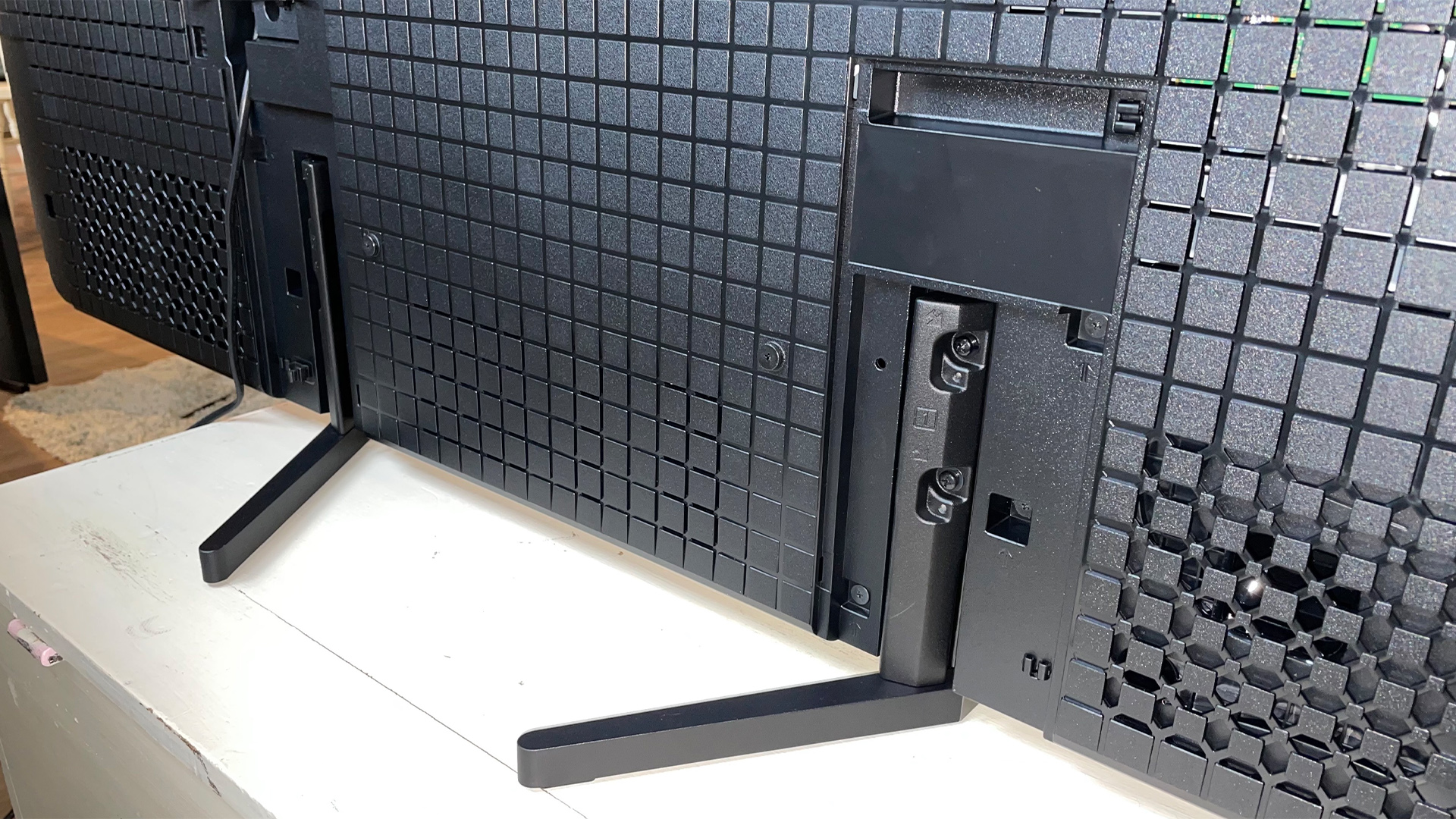
The 65X95L’s Acoustic Multi-Audio system is almost as refined and sophisticated as its picture quality, though it’s not as impactful.
The good news starts with its general tone which, by TV standards, manages to bring out lots of subtlety and detail from even the densest movie soundtracks or stereo music mixes without any element sounding misplaced or overly dominant. In fact, there’s always a lovely rounded, fulsome tone to even the shrillest trebles – even though the TV is also able to project its soundstage a good distance beyond the confines of its physical frame. It’s really not easy for TV speakers to produce a large sound presence without losing cohesion or becoming brittle, but the X95L pulls it off superbly.
The Frame Tweeter design, as billed, helps sounds appear to be coming from more or less the correct area of the screen, increasing your immersion in what you’re watching even though the sound doesn’t really project forward towards you with the same impact you get from the Acoustic Surface technology Sony deploys on its OLED TVs.
Aside from that lack of directness, the only thing that causes the X95L to drop a mark for its sound is its rather timid approach to bass. Its two built-in subwoofers lack the courage to delve down to particularly deep frequencies, and are also too subdued in the overall sound mix to add the sort of heft and scale to action scenes that we’d hope to hear from such an otherwise cinematic TV.
On the plus side, though, the X95L does at least seem to be treating the limitations of its bass speakers with respect, rather than trying to push them to a point where they break down into distracting distortions.
Verdict
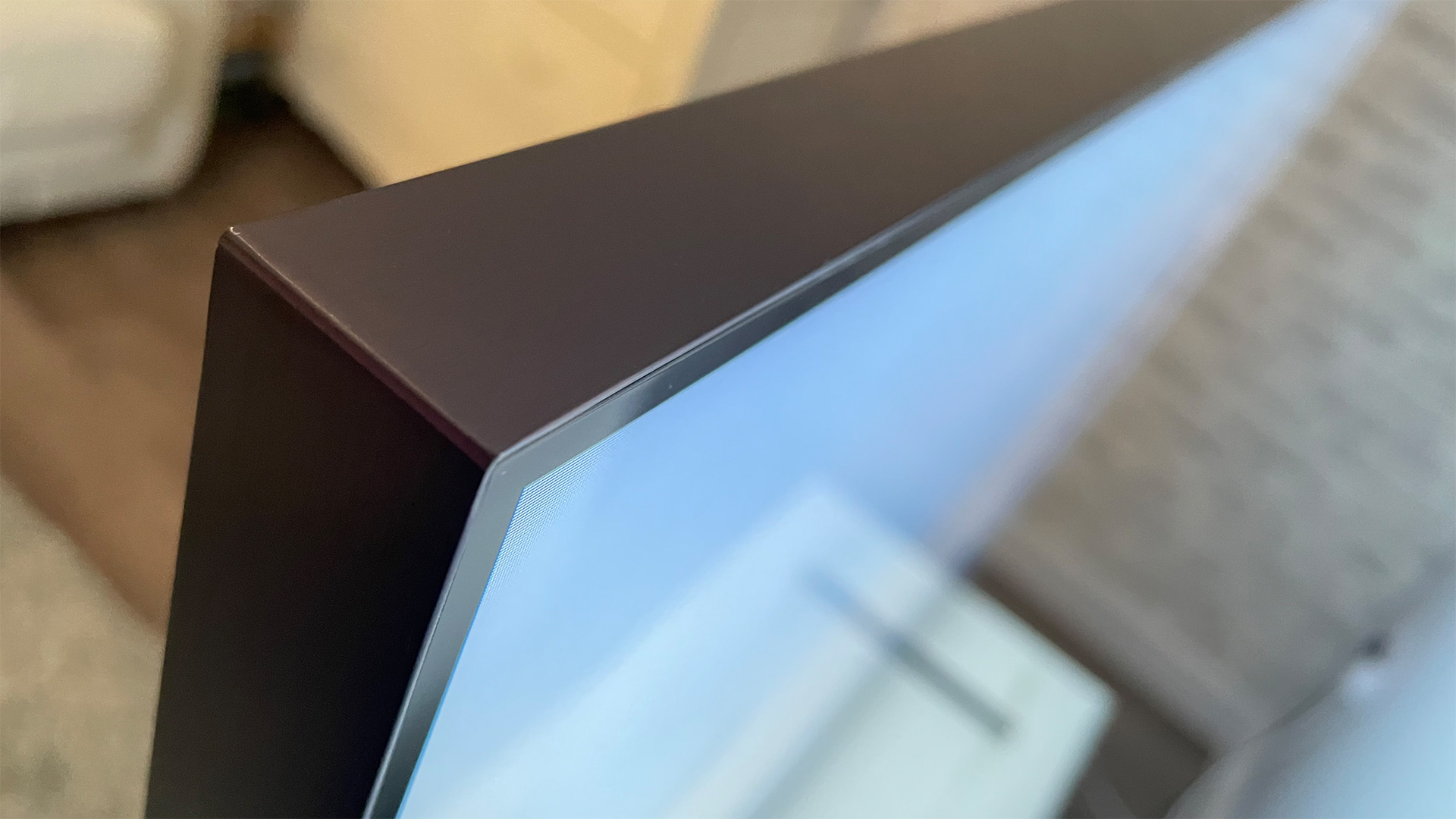
The X95L proves that Sony can deliver the goods from seemingly any screen technology. Its improved light control takes everything from black levels and contrast to colour and even detail consistency to another level – a level so high, in fact, that it succeeds in making the set look like a bit of a bargain.
SCORES
- Picture 5
- Sound 4
- Features 4
MORE:
Read our review of the Samsung QE65QN95C
Also consider the LG OLED65C3
Read our Sony XR-65A80L review
The latest and greatest TVs, rated and ranked
John Archer has written about TVs, projectors and other AV gear for, terrifyingly, nearly 30 years. Having started out with a brief but fun stint at Amiga Action magazine and then another brief, rather less fun stint working for Hansard in the Houses Of Parliament, he finally got into writing about AV kit properly at What Video and Home Cinema Choice magazines, eventually becoming Deputy Editor at the latter, before going freelance. As a freelancer John has covered AV technology for just about every tech magazine and website going, including Forbes, T3, TechRadar and Trusted Reviews. When not testing AV gear, John can usually be found gaming far more than is healthy for a middle-aged man, or at the gym trying and failing to make up for the amount of time he spends staring at screens.

